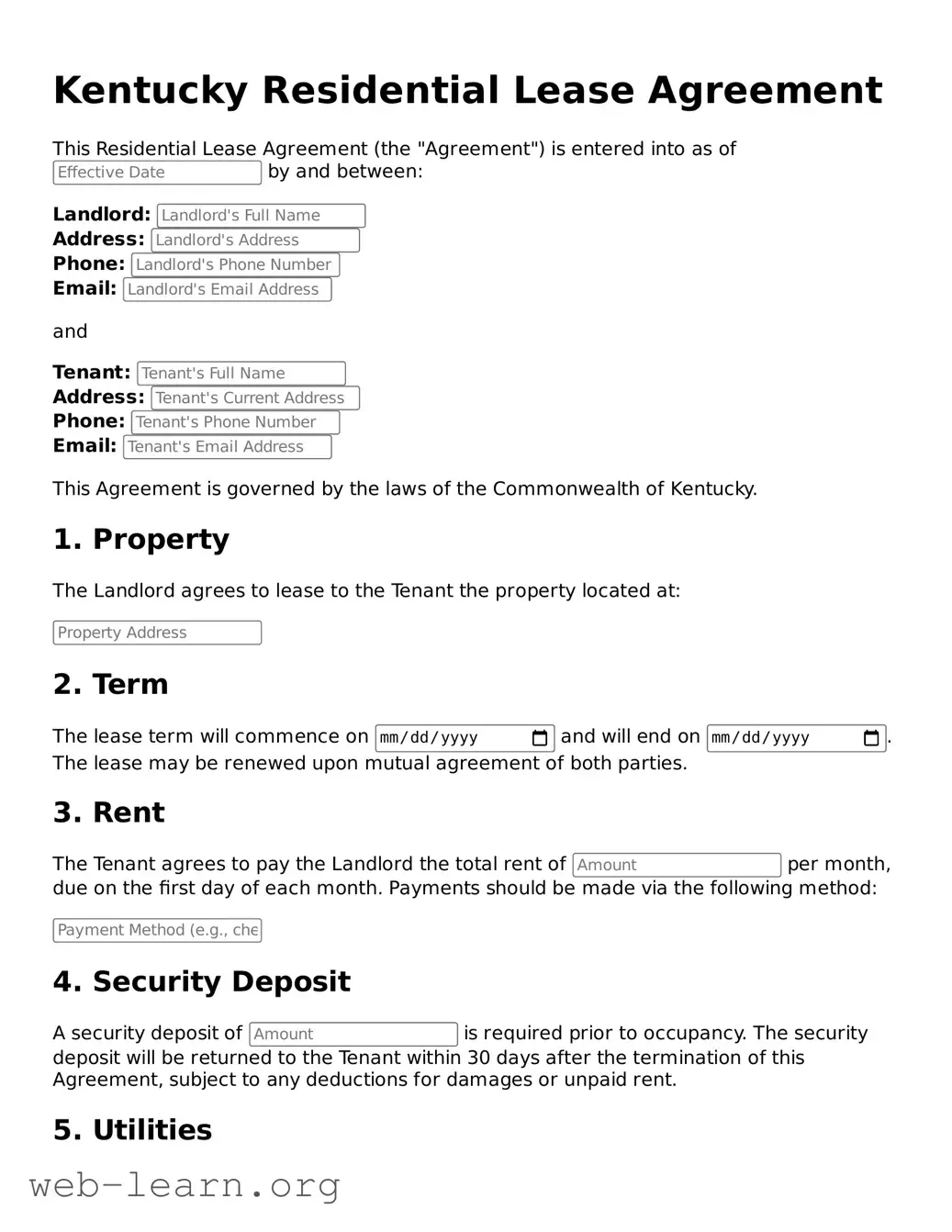Attorney-Approved Residential Lease Agreement Document for the State of Kentucky
A Kentucky Residential Lease Agreement is a legal document that outlines the terms and conditions between a landlord and tenant for renting a residential property. This agreement ensures that both parties understand their rights and responsibilities during the lease period. Knowing how to properly complete and use this form can protect your interests and promote a positive rental experience.
